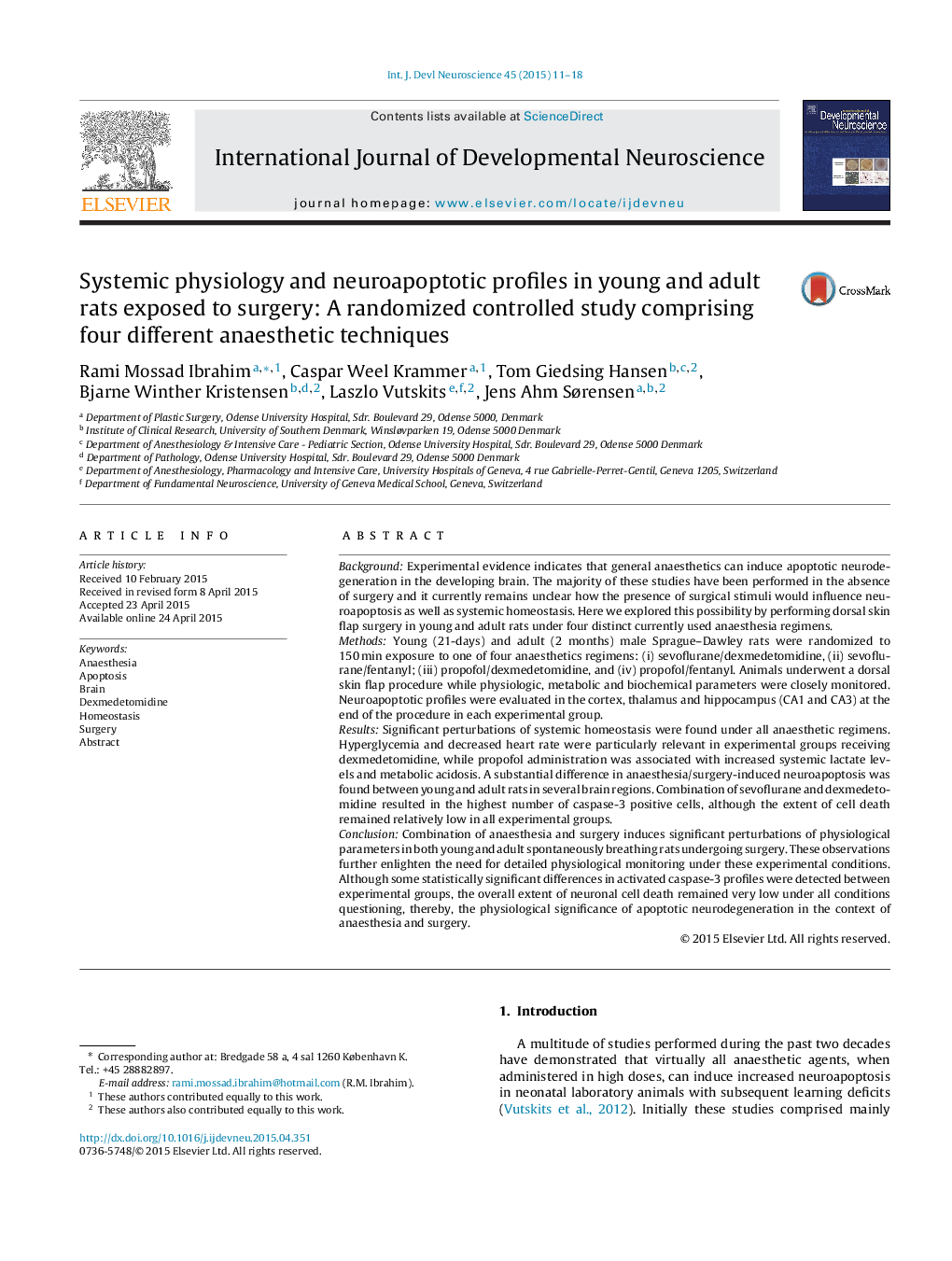| Article ID | Journal | Published Year | Pages | File Type |
|---|---|---|---|---|
| 2785829 | International Journal of Developmental Neuroscience | 2015 | 8 Pages |
•We monitor anaesthetized rats during 4 regimes on both systemic and brain homeostasis.•Dexmedetomidine caused significant hyperglycemia in adult rats.•We induced a surgical trauma and studied the effect on apoptosis•Clinically relevant doses/exposure let to minimal neuroapoptosis.•Neuroprotective effect of dexmedetomidine seemed to be minimal in our setting.
BackgroundExperimental evidence indicates that general anaesthetics can induce apoptotic neurodegeneration in the developing brain. The majority of these studies have been performed in the absence of surgery and it currently remains unclear how the presence of surgical stimuli would influence neuroapoptosis as well as systemic homeostasis. Here we explored this possibility by performing dorsal skin flap surgery in young and adult rats under four distinct currently used anaesthesia regimens.MethodsYoung (21-days) and adult (2 months) male Sprague–Dawley rats were randomized to 150 min exposure to one of four anaesthetics regimens: (i) sevoflurane/dexmedetomidine, (ii) sevoflurane/fentanyl; (iii) propofol/dexmedetomidine, and (iv) propofol/fentanyl. Animals underwent a dorsal skin flap procedure while physiologic, metabolic and biochemical parameters were closely monitored. Neuroapoptotic profiles were evaluated in the cortex, thalamus and hippocampus (CA1 and CA3) at the end of the procedure in each experimental group.ResultsSignificant perturbations of systemic homeostasis were found under all anaesthetic regimens. Hyperglycemia and decreased heart rate were particularly relevant in experimental groups receiving dexmedetomidine, while propofol administration was associated with increased systemic lactate levels and metabolic acidosis. A substantial difference in anaesthesia/surgery-induced neuroapoptosis was found between young and adult rats in several brain regions. Combination of sevoflurane and dexmedetomidine resulted in the highest number of caspase-3 positive cells, although the extent of cell death remained relatively low in all experimental groups.ConclusionCombination of anaesthesia and surgery induces significant perturbations of physiological parameters in both young and adult spontaneously breathing rats undergoing surgery. These observations further enlighten the need for detailed physiological monitoring under these experimental conditions. Although some statistically significant differences in activated caspase-3 profiles were detected between experimental groups, the overall extent of neuronal cell death remained very low under all conditions questioning, thereby, the physiological significance of apoptotic neurodegeneration in the context of anaesthesia and surgery.
